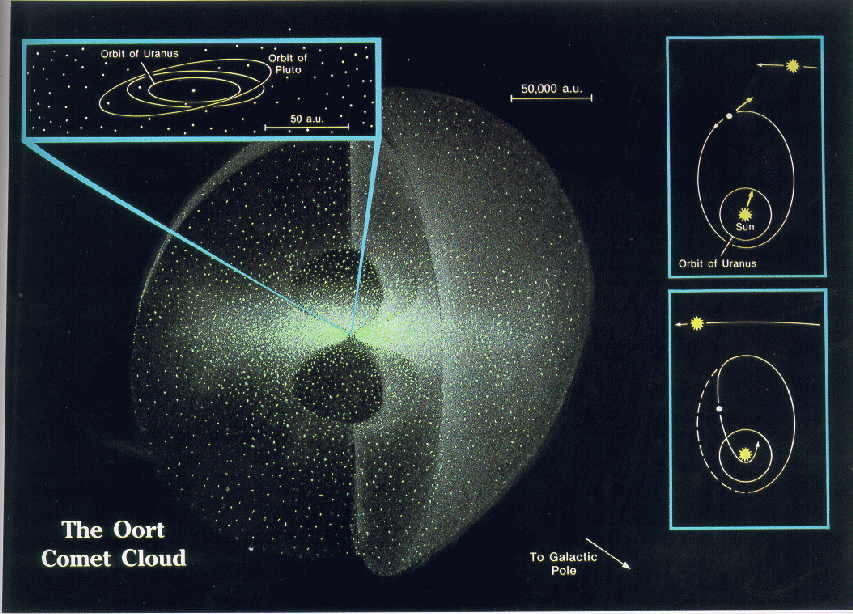
Based on the orbits of long period comets, in 1950 Jan Oort proposed that a distance, spherical distribution of cometary nuclei surrounding the solar system.Distance: 3,000 - 100,000 AU (Pluto=30 AU, nearest star=275,000 AU)
- Why distant?
- Why spherical?
Number of Comets: > 1012
Mass: ~ 10 -25 Mearth (or bigger!)

The Oort Cloud has never been seen -- objects are a million times fainter than the faintest things we can see even with big telescopes.
- Objects did not form there, they were scattered out of the solar system by the giant planets.
- Passing objects (stars, gas clouds) have randomized their orbits into a spherical cloud. (Inner portions of the cloud have probably not been totally randomized, and remain flattened).
- Passing objects scatter Oort cloud objects into the solar system -- the origin of long period comets. (Periodic bombardment?)
The Oort cloud cannot explain the origin of the short-period comets. There must also be a more nearby, flattened distribution of comet nuclei -- the Kuiper Belt.(A good Kuiper Belt information page by Dave Jewitt)
Hypothesized in 1951, first object found by Jewitt and Luu in 1992:
Now there are a few dozen Kuiper Belt objects known. Pluto/Charon may be the biggest.
Unlike objects in the Oort Cloud, Kuiper Belt objects most like formed in place. Their history is one of simple formation conditions rather than dynamical evolution.
Interactions with the outer planets shape the orbits of short-period comets.